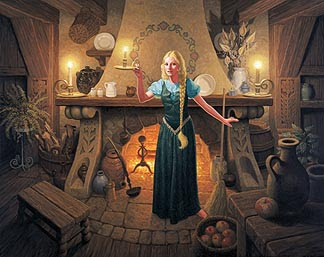Squeaking in at the last minute is a final Orctober offering: three Giant Black Orcs by Bob Olley. Yes, that's right... they're not just Orcs, they're not just Giant Orcs... they're Giant Black Orcs. That phrase should strike fear into your heart. It's like hearing your doctor say, it's not just herpes, it's not just antibiotic-resistant herpes... it's antibiotic-resistant genital herpes.
One of my arsenal of personality defects is that I am an obsessive completionist. Once I start collecting something, I have to collect it all. So last year, I was proud of myself when I finished collecting and painting all 12 of Bob Olley's Iron Claw Black Orcs (sculpted in 1988). I was proud of myself. I stopped being proud when someone on the Oldhammer Forum helpfully/unhelpfully pointed out that Olley sculpted three more Black Orcs in 1989. These three additions were grouped with the Iron Claw originals in the 1991 Catalogue as "Giant Black Orcs".
 |
| An Iron Claw Black Orc |
I've written before about how much I love Olley's sculpting style. The original Iron Claw Black Orcs are like no other orc: hairy, big-lipped and wrinkled. Sadly, these three later specimens are not so odd. They replicate the conventional features of orcs in the age of Kev Adams: lots of muscles, a comic under-bite and a bald, triangular skull with deep-set eyes. That being said, these are quality models with strong dynamic poses. As with all Olley miniatures, the faces are full of character.
To mark the end of another Orctober, I'm adding a new Miniature Gallery to those gathered on the right of this page: the complete Bob Olley Giant Black Orcs. At least, I hope it's complete...
 |
| Citadel "Giant Black Orc Axe 2" |
 |
| Citadel "Giant Black Orc Mace 2" |
 |
| Citadel "Giant Black Orc Axe 1" |
Happy Orctober!









